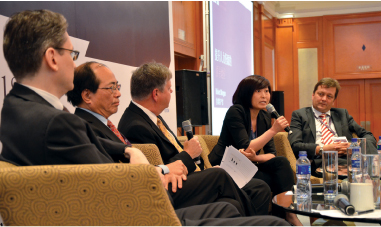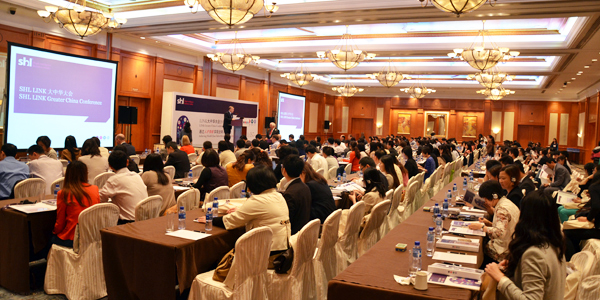
Not an organisation to do things by half, SHL are making their presence known in China, and how.

SHL LINK Conference, Shanghai, China
The SHL LINK Greater China Conference 2012 was held in Shanghai in May, and gave an international line up of HR professionals the chance to share latest best practices on talent acquisition and management. Highlighting what HR needs to consider for the future of strategic staff assessments, speakers revealed what smiling, Viagra and putting airplane engines into air conditioners had to do with performance assessment and innovation in HR.
Strategic assessment
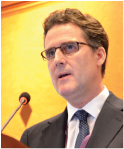
Mike Tims, President, Asia, Africa and Middle East, SHL.
Mike Tims, President, Asia, Africa and Middle East, SHL, kicked off the conference by explaining what strategic assessment actually means and how without it an organisation may often lose some of the best potential candidates by the time they arrive at the office for their first day of work. Previously, assessments of individuals were compared but now HR has become more sophisticated and compares ‘groups of talent’ to gain better strategic insights into the effectiveness and capabilities of discrete talent pools. Tims cited an organisation which previously had to look outside its own talent pool 90% of the time to recruit for senior marketing positions. More recently, following quantitative assessment of their own talent pools, the organisation can now identify top performing talent early in their careers, and plot a career path for them that helps not only keep them within the organisation, but also significantly reduces costs associated with bringing in external hires. When looking into the future, Tims said HR needs to consider three factors:
- diversity—thinking internationally and working out where the organisation can get the best people;
- candidate experience—what does it feel like for the candidate as the recruitment process will be their first impression of the organisation; and
- social networks—as a point of contact with international talent pools.
Referring to social media, Tims predicted, “This is probably going to dis-intermediate the recruitment industry within the next 2–4 years.” Revenue maximisation through talent data HR professionals are not known for their love of spreadsheets but HR data and key metrics are becoming more and more important to push organisations in the right direction strategically. Jeremy Shapiro, HR Executive, Morgan Stanley asked, “Should we only ask to be aligned?” Simply aligning HR with an organisation’s business strategy is not enough—HR helps to shape the business. Shapiro cited the case of Caesars Entertainment in Las Vegas, USA—a business which wanted to keep customers in casinos for longer. The Casino measured ‘smile frequency’ among its frontline staff and it was discovered that if a customer was not smiled at, at least once every 10 minutes, they were much more likely to leave the casino. From a training perspective this was a ‘good behaviour’ thatcould be inculcated fairly easily. The result was that, by virtue of analaysing and modifying employee behaviours, HR was able to add millions of dollars in revenue. Another way HR was able to turn data into a competitive advantage came from a recruitment perspective. The casino relied heavily on assessments to find the right people for the right job and so built in a workforce forecast to the recruitment campaigns. This allowed them to look 14 weeks ahead at staffing needs for the future—and allowed them to maintain optimum staffing levels at all times. Again, HR was able to save the organisation millions in revenue.
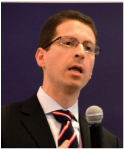
Jeremy Shapiro, HR Executive, Morgan Stanley.
Putting airplane engines into air cons
Shapiro highlighted the importance, and financial benefits, of HR fostering a culture of innovation within their organisations. Citing a case study from United Technologies where one group of engineers working in the refrigeration and air conditioning section were looking for ways to reduce the heat created by air conditioners. Meanwhile, another group of engineers in the aerospace division had already developed heat exchange technologies to help dissipate heat generated in jet engines. When the two groups of engineers met by chance in a relaxed setting on a cross-departmental corporate function, and got talking the realisation dawned that the jet-engine technology could be applied to the air conditioning units. By allowing information transfer, and subsequent technology transfer across business units, the organisation was able to create the number one selling heat exchanger in the market. This innovation happened by chance and such were the financial benefits it brought about, that United Technologies began mapping social interactions of employees to see where ‘more accidents’ could be created.
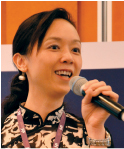
Elisa Wong, Vice President Human Resources, Hilti Asia Pacific.
Star people attract and recruit star people
Elisa Wong, Vice President Human Resources, Hilti Asia Pacific explained that having the right leaders in place at GM team levels allowed everything else to fall into place. In 2004, being a European business the GMs at Hilti were originally all expatriates. As the company grew to better understand the importance of ‘cultural fit’, they knew that in places in which this sensitivity is high, such as Japan, a deeper understanding of the local culture by GMs is crucial if a business wishes to successfully run an office there. With this in mind, their succession strategy began to involve the use of ‘feeder roles’ whereby for example, a GM in Hong Kong may be favoured for a move into China, over a European GM, as the sensitivity and culture fit of Hong Kong GMs is more aligned with that in mainland China. Internally, Wong expects 20% of each organisational level to have the potential to move up. She asserted, “Succession planning is an insurance plan.” She advised that organisations cannot afford to overlook it.
Buy before you try
Unilaterally dictating the direction in which an employee’s career develops will inevitably help you lose that employee, especially if they have very different ideas on how their career should develop. Christoph Bonert, Head of Global Talent Acquisition, Philips International suggested that talent pools which derive from an exclusive approach are something of the past.
An inclusive mindset which avoids looking at talent pools and a move away from standardised global processes will produce more effective succession planning. Bonert said, “People grow their careers at the pace they desire.” He noted that he is still trying to answer the elusive question as to how to attract talent without exclusive pools, but he believes that interaction between employees and external candidates is key. He called this ‘Pre-purchase behaviour’ through which external candidates can find out from internal employees if the organisation is for them. Typically a vacancy is posted, employees react and then the position is filled. Employees, however, can be passive and hence don’t step forward for a position. Bonert exerted that social media is now developing to assist with internal headhunting, in that employees no longer ‘apply for posted positions’ but are rather made aware of potential opportunities before a position is actually available so that they are better prepared for future career moves. Bonert quipped, “Line managers are somewhat dubious as they may now believe: talent management is now hunting my people.”
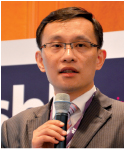
Arthur Wang, Recruitment Director, Deloitte China
Find your fit
Arthur Wang, Recruitment Director, Deloitte China demonstrated how his organisation had developed the concept of ‘Pre-purchase behaviour’. Wang showed delegates Deloitte’s ‘Find Your Fit’ online quiz which offers prospective employees the opportunity to see how well they fit into the organisation’s culture. On prospective employees, Wang commented, “The more they know, the stronger their desire is to get closer to us.” He added that many fresh graduates are not very down to earth and may lack practical experience—and that the company’s website gives them a real scenario to better understand Deloitte’s real working environment.
What should HR be doing?
Anson Tang, Chief Editor, Human Capital Management Magazine rounded off the day with advice to those in HR on what they should be doing now to attract and retain the best talent:
- Upgrading employment branding
- Reinvigorating referral programmes
- Renewing the focus on quality of hire
- Utilising social networks
- Utilising video
- Upgrading succession planning
- Utilising employee blogs for recruiting
- Utilising mobile phone recruiting
- Revitalising corporate pages
- Hiring innovators
- Recruiting globally
Panel Discussion: Moving HR into the Driver's Seat From left to right: David Hanna, Eddie Ng, Robert Morgan, Angela Xu and Erik Schmit.




